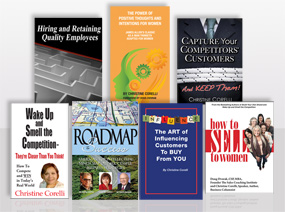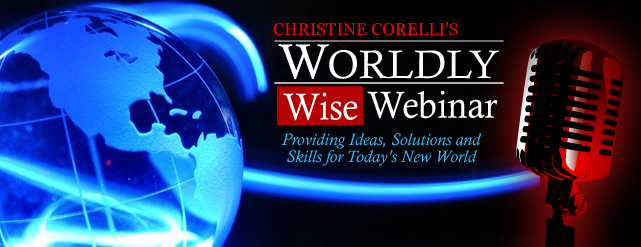![]()
While conducting research for my new book, Capture Your Competitors’ Customers, and KEEP Them, Bob Faught, a valued client and VP of Marketing for Nova Solutions, shared the experience below. (At the time it occurred, he was a regional sales manager for a commercial furniture manufacturer.)
As a Sales Manager, you often hear your President and other Senior staff members try to bolster the sales staff with confidence that you can win any job. On the other hand, have you ever had the President of your company tell you that there is “NO WAY” that your company could win a major project with seven other major approved suppliers from your industry? “Don’t even waste your time on it.” This exact scenario did happen, and a few of the President’s reasons were the following:
• “We cannot compete with the “Big Boys.”
• “We’ve never won a major job like this before.”
• “We don’t have the depth and breadth of products this customer is looking for.”
• “We’ve never competed on a single project this large before.”
• “We don’t have the necessary tools and resources.”
• “Let’s focus on those jobs we have a chance at winning.”
My response to the President was simple: “I will take care of this account so the team can stay focused on day-to-day business, using those team members only when necessary.” The President’s response was, “I’ve always admired your ‘can-do’ attitude. I don’t know how you can overcome the top seven competitors in our industry. O.K., give it a shot if you think it has a chance.”
David Can Beat Goliath
With that, I began the strategic planning of how to win this major project over seven major competitors, the largest twenty-two times the size of our company, the smallest three times our size. My daily mantra inside my heart was that history has proven that David beat Goliath, and we shall overcome.
Never Say Never
During that year that I focused quality, limited time on this account, I received little support. Inside our company, I was told many time how crazy I was for taking this on, and I was wasting my time. Our major competitors, who I got to know even better, quietly asked if I was really serious about going up against them and all their resources for such a large project. During that year, not one person from our company above my level ever came out to visit or help on this job. My comment back to everyone was, “NEVER say NEVER.”
Smart Strategic Sales Strategy You Should Use
During that first nine months, my strategic planning focused on the following:
• Getting to know the end-user better than they knew themselves
• Researching end-user’s long and storied history, with strategies making them successful
• Establishing strong relationships with the end-user at every level in all departments
• Taking the time to get to know the end-users Executive Staff and a few Board of Directors
• Listening closely to the end-user’s feelings on what they wanted from the winning supplier
• Research that confirmed key departments had little, if any, communications with each other
• Cross pollination of the end-user by visiting all key departments every two to three weeks
• Defining end-user’s challenges and needs once the contract was awarded
• Seeking out how we could differentiate ourselves from our competitors
• Honestly identifying advantages our competitors had over us
• Honestly identifying advantages we had over our competitors
• Essential services necessary to fulfill the end-user’s long-term needs
After nine months, the end-user wanted all eight suppliers to have the mock-ups of products requested on display for their Executive Staff and Board of Directors for final evaluation before making their final selection. This happened during the winter, and our truck was stuck in a severe snow storm, not able to make it on time. Our President said “I told you this was not going to work.” I said, “Get the truck out here immediately, and we will make it work.”
Because of the strong relationships I had built within the end-user’s organization, especially from their President down, they held a “special” review of our product alone. Instead of being one of eight, it became one on one.
Within a month, I received a phone call from the VP of Purchasing, stating that we were awarded the project, totaling over $11 million (the largest order in history of the company), and the contract needed to be signed the following week so work could begin. When I called our President to relay the good news, he thought I was joking with him. There was a period of shock for him to realize that we had actually won this job over all our major competitors. This job changed the company’s future vision and strategies, realizing that we could compete with the “Big Boys.”
Market share Increases from 2% to 42%!
When our President came out to meet the end-user for the first time, we stood on the steps of their headquarters overlooking their huge facility. He apologized profusely for not just having confidence in our team, but more importantly, our company. He commented that this one job increased our market share in that state from 2% to 42%. Moreover, he said, the company has now changed its entire strategic planning, knowing we can compete at the highest levels with the “Big Boys.”
Key Strategies and Initiatives That Captured The Customer
Finally, he asked the question that had been burning inside him since that phone call. “What in the world did you do to overcome all the obstacles, and major competitors, and prove to the end-user that we were the best choice?” I responded by giving a snapshot summary of the key strategies and initiatives that won this job:
• Maintaining a positive attitude and focused vision on the end goal throughout the process
• Knowing the end-user inside-out, what made them tick, what their hot buttons were
• Strong relationships from the President and Board to engineers, purchasing agents, etc.
• Hearing the end-user repeatedly state that all companies’ products look the same
• Validating that we did have the product and service offering to equal competition
• Defining their priorities (implementation, service, quality, price, in that order)
• Being known by end-user as “the one who talks to all departments, knows what’s going on”
• End-user’s fear of implementation due to lack of communication between departments
• Identified we would have to lead implementation through project management in all areas
• Offered “Full Project Management for Total Implementation” to end-user at NO cost
In summary, I told our President that one of the key decision factors for being selected was our offer of “Full Project Management for Total Implementation” at NO cost. Once I confirmed we would need to do this anyway, I used this “added service” to differentiate us from our competition. (I calculated the costs for project management and added this to our quote.) This took the fear, and accountability, of implementation out of their hands, and reduced the number of people they would need to dedicate to the project.
Identify Customers’ Most Basic Needs, Fears, and Drivers
In the end, we were not the lowest in price, and were able to recover any additional costs incurred from managing the total project. Through identifying the end-user’s most basic needs, fears, and drivers, coupled with strong relationships at every level, we actually became part of their own family even before they made their final decision. We demonstrated that selecting our company was a confirmation of the long-term joint teamwork between our two companies. We strongly validated that we had the people, services, and products to successfully complete their total project within the timelines requested.
The 15 Seconds of Euphoria in Success
Everyone in sales knows that when you are first told you have won a major project, you encounter about 15 seconds of euphoria, followed by the reality of all the challenges necessary to implement. This project had that same feeling, but took on a more bizarre twist.
In our successful quote, we also included design from an Architecture and Design (A&D) firm at no extra charge to the end-user (we would pay the A&D firm for their work). When I called the A&D firm to give them the good news of winning the project, I was told that they were too busy to support us, and, in confidence, “we really didn’t think you had a chance of winning this!”
To stay on schedule, the first building needed to be designed and ordered within two weeks. Our company then asked “Who are you going to get in this short time that understands our products and customer’s needs?” As always, another daunting challenge, but there was a solution.
My background was architecture and design, which is why I was able to easily communicate with the A&D community. I simply tightened my belt, looked forward with that same positive drive and desire, and said I would get it done. I went out and bought all the drafting equipment necessary (I had not learned AutoCAD yet) to complete this job. I had them ship this program to my hotel room which, ironically, had a straight view of the end-user’s facility in the distance (talk about staying focused).
During the days, I would interview the departments for the necessary details. In the evenings I would work on the design. During this two weeks there were a few nights that I did not get any sleep simply to stay on schedule. Also, since this was an existing building with block wall interiors, trying to fit the design to blend perfectly with their existing space was an unbelievable challenge. But, about 3 AM one morning, the vision for this solution somehow came to me, and it worked.
Within two weeks I completed the design and the entire order for our factory. When the building was complete within two months, everyone was amazed at the final solution to fit everything perfectly into the existing building. Even though design was not part of my job description, the end-user asked if I could oversee the next two buildings. This enabled us to integrate and train our own design staff into this new end-user.
Ironic how a company with no chance at winning proves to everyone they have what it takes to compete at the highest levels. The success of this job led directly to securing over ten buildings with another company, about 40 miles away, totaling over $5 million, in the next two years. The positive attitude and courage to nurture our own little seed in the midst of the giant garden allowed us to eventually build our own private plot that would rival others for years.
Size Doesn’t Always Matter
Even though this happened over twenty years ago, the principles and strategies today are the same, because they simply involve working with people and their needs. This example also proves it is not the size of your company that matters. Moreover, you never know when you and your sales team will be challenged to pull out all your resources and talent to go well beyond the call of duty. Long-term success revolves around having those individuals who have the positive attitude, focused vision, strategic insight, passion, courage, and pride to take your company to new levels never before experienced.
What a great story! Thanks, Bob! And continued success to you!
How about you? Ask yourself these questions. Regardless of what business you’re in, what key strategies and initiatives can help you capture and keep your competitors’ customers? How hard are you willing to work? What are you doing to differentiate yourself from your competitors? Would you be willing to do whatever it takes?

